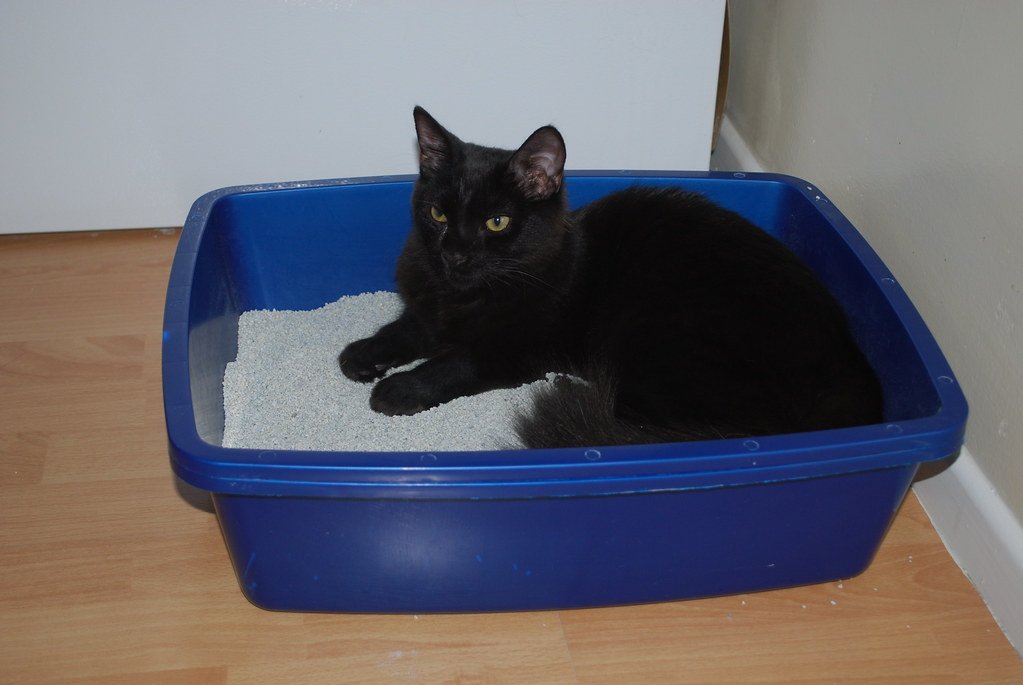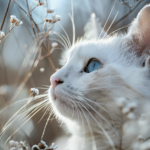Have you ever watched your cat and wondered what’s going on behind those mysterious, glimmering eyes? Cats are known for their subtlety, often communicating their feelings in the quietest ways. Unlike dogs, who bark or wag enthusiastically, cats whisper their emotions through tiny changes in behavior. Sometimes these gentle signals are so quiet that they’re easy to miss—yet they can be the clearest clues to how your feline friend is really feeling. If you’ve ever felt the urge to understand your cat on a deeper level, keep reading. Here are ten quiet behaviors that might just reveal an emotional shift in your beloved cat.
A Sudden Preference for Hiding

One of the most telling quiet behaviors in cats is when they suddenly start hiding more than usual. If your cat, who once loved lounging in the sun or curling up on your lap, begins to retreat under beds or into closets, it’s a sign worth noting. Cats often hide when they feel stressed, anxious, or unwell. This instinct comes from their wild ancestors, who would conceal themselves to avoid predators when feeling vulnerable. If this new hiding habit persists, it could be your cat’s way of saying something isn’t right emotionally or physically. Watch for other subtle cues that may accompany this behavior, such as less interest in food or play. The key is to respect your cat’s space while keeping a gentle eye on their overall well-being. When in doubt, a cozy hiding spot can sometimes be a comfort zone—but a sudden change should always raise your awareness.
Changes in Grooming Habits

Cats are famous for their meticulous grooming routines, often spending hours each day keeping themselves pristine. However, a shift in these habits can be a strong indicator of an emotional change. If your cat suddenly stops grooming or, conversely, starts over-grooming to the point of bald spots, this is a clear sign of stress or discomfort. Over-grooming can be a coping mechanism, much like a human biting their nails when anxious. On the other hand, neglecting grooming may signal sadness, illness, or depression. Notice if your cat’s fur appears dull, greasy, or if mats start to form—these are silent cries for help. Gentle brushing and extra affection can sometimes help, but persistent changes should always be checked by a vet. Grooming is a window into your cat’s soul; don’t overlook the message they’re sending.
Reduced Interest in Play

Play is a vital part of a cat’s daily routine, providing both exercise and mental stimulation. When a cat suddenly loses interest in toys or interactive games, it often points to an emotional shift. A usually playful cat that ignores their favorite feather wand or simply watches a rolling ball without pouncing may be feeling down, stressed, or even sick. Sometimes, this change is gradual, making it even harder to spot. Cats use play to express joy, curiosity, and even affection, so a drop in playfulness can be their way of retreating inward. Encourage gentle play sessions and try to introduce new toys to spark their interest. If the change persists, it might be time to seek advice, as emotional shifts can sometimes be linked to underlying health issues. Even the quietest drop in energy speaks volumes about your cat’s inner world.
Altered Eating Patterns

Eating habits are one of the most reliable indicators of a cat’s emotional state. A cat that suddenly starts eating less, skips meals, or becomes finicky about food could be experiencing stress or sadness. Conversely, some cats might eat more as a form of comfort, just like people who turn to snacks when feeling low. These changes are often subtle; perhaps your cat lingers longer at the bowl without actually eating, or leaves more food behind than usual. Watch closely for any shift in their eating rituals, as appetite is closely tied to emotional and physical health. If you notice a sustained change, it’s crucial to consult with a veterinarian. Quiet shifts around mealtime can be easy to miss, but they’re often the first sign that your cat is feeling differently inside.
Reluctance to Use the Litter Box

Litter box habits are another quiet but powerful indicator of a cat’s emotional well-being. If your cat suddenly starts avoiding the litter box or has accidents outside of it, this could be a sign of stress, anxiety, or discomfort. Cats are creatures of habit, and any change in their bathroom routine often signals that something has shifted emotionally. Sometimes, they might associate the litter box with a negative experience, especially if there’s been a recent upset at home or a change in their environment. Scrupulously clean the box and make sure it’s in a quiet, comfortable location. If the problem persists, it’s important to rule out medical issues. Even a small change in where or how your cat uses the litter box can speak volumes about their current emotional state.
Subtle Vocalization Changes

While some cats are naturally chatty, others are more reserved. Pay close attention if your usually quiet cat starts vocalizing more—or if a typically talkative cat falls silent. The tone, frequency, and volume of your cat’s meows, chirps, or purrs can provide valuable clues to their emotional world. Sometimes, a soft, plaintive meow replaces a happy chirp, or your cat may only make sounds late at night. Changes in vocalization can be cries for attention, expressions of anxiety, or simply your cat’s way of saying they need something different. It’s easy to overlook these subtle differences, but they’re often the first hint that your feline friend is experiencing an emotional shift. Listen with your heart as well as your ears, and you’ll start to decode these quiet conversations.
Increased Clinginess or Withdrawal

A change in how much your cat seeks out your company can signal a shift in their emotional state. Some cats become extra clingy, following you from room to room, curling up in your lap more often, or even meowing for attention. Others might do the opposite, withdrawing from family members and seeking solitude. Both behaviors are quiet ways of expressing a need for comfort or space. Cats are sensitive to changes in their environment and routines, so any disruption—like a new pet, a move, or even a change in your schedule—can prompt these emotional shifts. Whether your cat is suddenly glued to your side or hiding away, it’s their way of coping with feelings they can’t express in words. Giving them the reassurance they need, or the space they crave, can help restore their emotional balance.
Change in Sleeping Patterns

Sleep is a big part of a cat’s life, but changes in sleeping habits can be telling. If your cat starts sleeping much more than usual, or chooses different, isolated spots to nap, it could indicate stress or sadness. On the other hand, restlessness, frequent waking, or trouble settling down for naps are also signs of emotional unrest. Cats are creatures of routine, and a shift in their sleep can reveal deeper emotional changes. You might notice your cat avoiding their favorite sleeping spots or suddenly joining you in bed when they never did before. These subtle cues are easy to overlook, but they’re often your cat’s way of seeking comfort or signaling that something has changed inside. Observing these patterns can help you understand what your cat is feeling, even when they’re at their quietest.
Gentle Tail Flicking or Twitching

A cat’s tail is like a mood ring—paying attention to it can reveal a lot about their feelings. Quiet, gentle tail flicks or subtle twitching often signal agitation, anxiety, or even mild irritation. Unlike the dramatic, swishing tail movements that show excitement or anger, these soft gestures are easy to miss. Your cat might be lying calmly, but a barely perceptible twitch at the tip of their tail can reveal nervousness or uncertainty. This behavior is especially telling when paired with other subtle changes, like flattened ears or dilated pupils. The tail is your cat’s emotional barometer, so those gentle movements can be silent cries for reassurance or a request for space. Observing these signals, even when they seem small, helps you connect more deeply with your cat’s emotional world.
Shifts in Social Interaction with Other Pets

If your household includes more than one pet, changes in your cat’s interactions with their furry companions can be a big clue to emotional changes. A cat that once played or napped with another animal may start avoiding them, hissing, or even displaying mild aggression. On the flip side, a normally aloof cat might suddenly seek out contact with another pet for comfort. These quiet shifts in social dynamics often go unnoticed but can be the first sign of stress, insecurity, or even jealousy. Cats are highly sensitive to changes in their environment, and the addition or loss of a pet can deeply affect them. Watching how your cat behaves with others, and noting any changes, is a valuable way to understand their emotional health. Even small adjustments in their social life can signal a deeper emotional shift.

Linnea is a born and bred Swede but spends as much time as possible in Cape Town, South Africa. This is mainly due to Cape Town’s extraordinary scenery, wildlife, and atmosphere (in other words, because Cape Town is heaven on earth.) That being said, Sweden’s majestic forests forever hold a special place in her heart. Linnea spends as much time as she can close to the ocean collecting sea shells or in the park admiring puppies.






